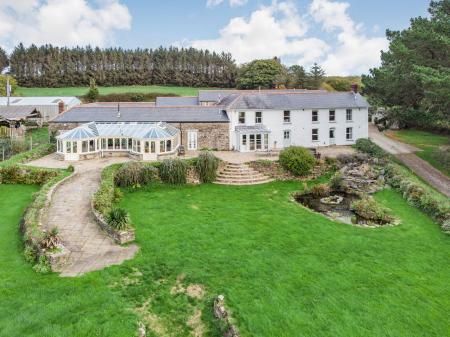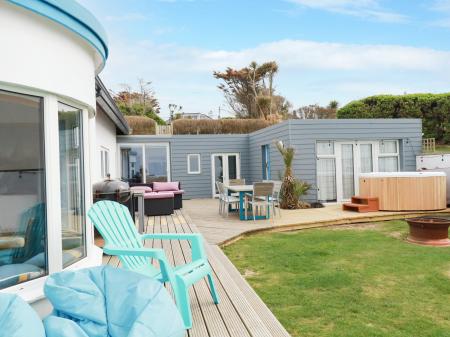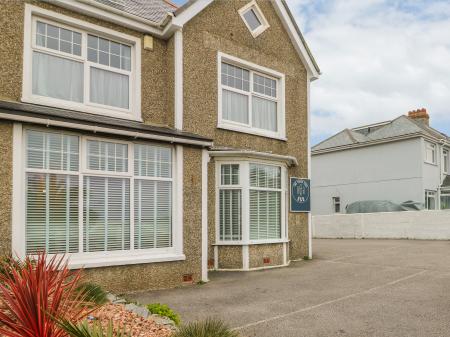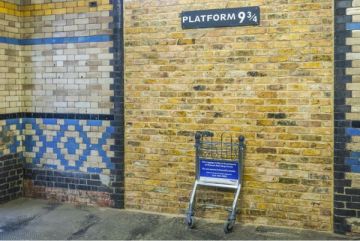London is blessed with an abundance of historic pubs, many of them incredibly atmospheric. There would be a lot more, but most were destroyed in the Great Fire of London in 1666. As a result, many of the pubs on this list date to the 17th and 18th centuries.
Which is the oldest pub in London? The answer to that depends on how you determine a building's age! Does it count if a pub has cellars that predate the current building? Does it count if the pub has changed names, or if a pub with the same name has stood in several different locations? Does it matter if the building has not always been a pub?
There's no easy answer to those questions, so I'm not going to try. Suffice it to say, every pub on this list is historically important and interesting in its own right.
Please note, this is not intended to be a comprehensive list of all the historic pubs in London, but merely the ones I have personally visited (or at least, walked past).

1. The Lamb and Flag, Covent Garden
The first mention of a pub here came in 1772, though it wasn't called the Lamb and Flag until 1833. The pub hosted bare-knuckle prize fights in the early 19th century, earning it the nickname, 'The Bucket of Blood'. In 1679 the poet John Dryden was attacked in the neighbouring alley by thugs hired by the 2nd Earl of Rochester, with whom he was feuding.

2. Nell of Old Drury, Covent Garden
Standing opposite the Theatre Royal in London is a 19th-century pub known by the peculiar name 'Nell of Old Drury'. The name refers to Nell Gwynn, the orange-seller who became King Charles II's mistress. Nell was born in nearby Drury Lane.
A tunnel reputedly used by the king to visit Nell runs between the pub's cellars and the theatre. The Old Nell was used as a setting for the Alfred Hitchcock film, 'Frenzy'.

3. The Sherlock Holmes, Charing Cross
The Sherlock Holmes is a Victorian pub on Northumberland Street, near Charing Cross. The pub is known for its Sherlock Holmes exhibition, based on a collection created for the 1951 Festival of Britain with the aid of Sir Arthur Conan Doyle's family. The centrepiece of the exhibition is a recreation of Holmes' study.

4. The Lamb, Bloomsbury
The Lamb is a picturesque 18th-century pub on Lamb's Conduit Street in Bloomsbury, London. The 'Lamb' in question was William Lamb, who rebuilt nearby Holborn Conduit in 1577. The pub was built in the 1720s and retains its 'snob screen', a barrier that screened bar staff from well-heeled customers. Charles Dickens lived nearby and was a frequent visitor.

5. Old Doctor Butler's Head, Moorgate
Here's one of London's most oddly-named pubs, and one with a fascinating history. The Old Doctor Butler's Head was opened in 1610, though the present building dates to 1666, after the Great Fire of London destroyed the original building.
The peculiar name comes from Dr William Butler, an eccentric physician who rose to become King James I's court physician. Butler was known for his very strange 'cures' for illness, including a medicinal ale for gastric ailments which could only be obtained from pubs - like this one - bearing his likeness on their signs.

6. Holy Tavern, Clerkenwell
The Jerusalem Tavern in Clerkenwell was built in 1720 and stands within the grounds of the Clerkenwell Priory, headquarters of the Knights Hospitaller in England. The old priory gatehouse is a short stroll down a path beside the pub. The pub was renamed the Holy Tavern since I took this photo.

7. Dirty Dicks, Bishopsgate
Opposite Liverpool Street Station in historic Bishopsgate stands a pub with an unusual name and an even more unusual history. Dirty Dicks is a picturesque 18th-century pub named for a notorious local businessman, Richard Bentley, who was famous [or infamous] for never washing anything, including himself. Charles Dickens frequented the inn and was said to be inspired by the original Dirty Dick to create his character of Miss Havisham in the novel 'Great Expectations'.

8. Ye Olde Mitre, Holborn
In 1546 the Bishop of Ely built a small pub to cater to his London retainers. The result is one of London's smallest (and oldest) pubs. Ye Olde Mitre stands in a narrow pedestrian passage in Holborn, off Hatton Garden. Queen Elizabeth I once danced around the cherry tree that now supports the pub's front facade.
Curiously, the pub was once officially part of Cambridge, because the bishop's see of Ely encompassed the city of Cambridge.

9. Cittie of Yorke, Holborn
There has been an inn on this site since 1430, though the building we see today was erected in 1923. The Cittie of Yorke is known for its extraordinary mock-Tudor interior, the subject of an ode by poet Dylan Thomas, who drank there.
The pub claims to have the longest bar in London and has a 17th-century cellar with a working bar. The Cittie of Yorke stands beside the entrance to Grey's Court and is frequented by lawyers from the Inns of Court.

10. Ye Olde Cheshire Cheese, Fleet Street
Ye Olde Cheshire Cheese is a wonderful historic pub on Fleet Street in the heart of London. There has been a pub on this site since at least the reign of Henry VIII, but the present building was erected in 1667 after the original was destroyed in the Great Fire of London. The pub's cellars may have belonged to a 13th-century monastery on this site.

11. The George Inn, Southwark
The George Inn in Southwark is the oldest galleried inn in the London area. There was an inn here in the medieval period and the George stands beside the place where Chaucer's pilgrims left for Canterbury. The present building is owned by the National Trust and dates to 1677. It was mentioned by Charles Dickens in 'Little Dorrit'.

12. The Prospect of Whitby, Wapping
The Prospect of Whitby can trace its origins to 1520, though all that survives of that early pub is the worn stone floor. It was known at one time as The Devil's Tavern due to its unsavoury reputation as a haunt of smugglers and cut-throats. The 19th-century facade hides a largely Georgian interior.
In 1553 Sir Hugh Willoughby sailed from here on his ill-fated attempt to find the Northwest Passage, and it was from the Prospect of Whitby that the first fuchsia plant in Britain was sold. Tradition says that public executions of pirates took place here, though it seems more likely that they took place at Execution Dock, also in Wapping.

13. The Seven Stars, Holborn
Is this the oldest pub in London? Tradition says that The Seven Stars on Carey Street in Holborn dates to 1602 and is perhaps the only pub in central London to survive the Great Fire of 1666. Though the pub *may* be as old as the early 17th century, it seems more likely that the building dates to the 1680s. Either way ... it's old!

14. The Duke of Hamilton, Hampstead
Located on New End Street in Hampstead, the Duke of Hamilton is another of London's oldest pubs, founded in 1721. It is named for the fourth Duke of Hamilton, who was killed in a duel in 1712. The pub was a favourite of actors Peter O'Toole, Oliver Reed, and Richard Burton. It was listed as an 'asset of community value' in 2015.

15. Freemason's Tavern, Holborn (site of)
I could have filled this list with hundreds of locations that were the site of former historical pubs, but there is one particular location worth noting. The Grand Connaught Rooms at 61–65 Great Queen Street connects Holborn to Covent Garden. It is today a luxury event venue, restaurant, and bar, but back in 1863 it was the site of the Freemasons Tavern.
It was here on 26 October of that year that the Football Association was formed. The FA codified the laws of football and essentially governed what would become the most popular sport in the world.
Decades earlier, in 1806, the Geological Society of London was established at the tavern. It was the first geological society in the world.

15. Punch and Judy, Covent Garden
Built in 1787 and a fixture of the Covent Garden scene, the pub was named for the very first Punch and Judy puppet show in England, which took place here in 1662 and was watched by Samuel Pepys. The Punch and Judy retains much of its original 18th-century stonework. The pub was one of the few local buildings to survive bomb damage during the London Blitz.

16. The Anchor, Bankside (Southwark)
There has been a tavern here for over 800 years, though the name of the establishment has changed multiple times over the centuries. The present pub began as the taproom for the Anchor Brewery, some of which survives behind the pub. It was very likely from this spot that Samuel Pepys watched the progress of the fire across the river.
Some guidebooks incorrectly state that the pub was built in 1676 after the original was lost in the Great Fire of London, but this is incorrect, as the fire never reached the south bank of the Thames. The earlier pub was destroyed in a totally separate fire and the building we see today dates from 1676, though it has been rebuilt several times since then.
The pub has traditionally been a haunt of smugglers, and secret hiding places for contraband goods have been found during renovations.

18. Museum Tavern, Bloomsbury
A Grade II listed pub on Great Russell Street, near the British Museum. The Museum Tavern can trace its history to 1723, when it was known as the Dog and Duck. The name isn't random; duck hunting was a popular activity in the ponds behind Montagu House before that house was destroyed in 1686. It was renamed The Museum Tavern when the British Museum was built in 1759. The present building dates to 1864.
The Museum Tavern was a favourite of the writer Karl Marx, who wrote 'Das Kapital' in the reading room of the British Museum. Another patron was Sir Arthur Conan Doyle, who used the tavern as a setting for the Sherlock Holmes story, 'The Adventure of the Blue Carbuncle'. The pub retains its Victorian gas lanterns and bar fittings.
And one restaurant ...
 Rules Restaurant, Covent Garden
Rules Restaurant, Covent Garden

Here's a change from all these historic pubs; Rules is the oldest London restaurant known to be in continuous use today. The restaurant stands on Maiden Lane in Covent Garden, where it has welcomed diners since 1798. Since then it has been owned by only three families. Rules is known for serving game, much of it sourced from the restaurant's own estate in Teesdale. The restaurant appeared in the James Bond film 'Spectre' and in several episodes of 'Downton Abbey'.
There you have it; some of London's oldest and most intriguing historical pubs (plus one restaurant).
MOST POPULAR POSTS






